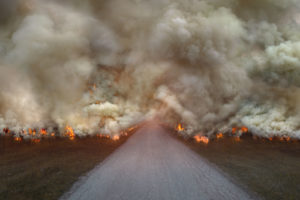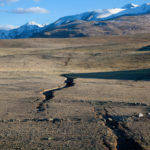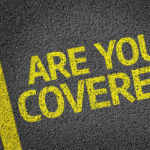- Alaska is prone to many natural disasters
- Alaska sits where two tectonic plates meet, which happens to be the cause of many of the natural disasters that occur in Alaska
- Protecting yourself and your belongings are essential when living in Alaska
- Comprehensive insurance will cover damage to your vehicle in the event of a national disaster
In 1867 the United States purchased Alaska from Russia, but Alaska didn’t officially become a state until almost a hundred years later in 1959. However, since the purchase of Alaska, the discovery of gold and oil have positively impacted the American economy.
Alaska, also known as the last frontier, boasts some of the most beautiful scenery in the world.
Snow-capped mountains, ethereal glaciers, arctic tundra, rushing rivers, untouched wilderness, wildflower covered meadows, epic wildlife, and small towns all come together to paint a beautiful picture of what Alaska really is.
To compare car insurance rates from multiple companies at once, enter your zip code above!
Natural Disasters in Alaska
As amazing as Alaska is, it is known to be prone to natural disasters. In 2014, a total of 233,529 acres of land was burned due to wildfires.
Another natural disaster hit in the form of a 7.1 magnitude earthquake in 2016. The list of potential natural disasters in Alaska is many, and those who live there should be prepared.
– Earthquakes
Alaska just so happens to be number one for earthquakes out of the whole United States. In fact, it accounts for more than 50 percent of all earthquakes that occur in America.
Earthquakes are caused by the movement of tectonic plates, which are basically giant slabs of rock that float above the earth’s mantle.
The reason why Alaska is so seismically active is because it sits right over the top of where two tectonic plates overlap, the Pacific Plate and the North American Plate. Alaskan earthquakes can be very dangerous as these earthquakes usually measure over 7.0 on the Richter scale.
An earthquake comes with little warning, so it’s best to be prepared ahead of time. Make sure you have emergency supplies on hand that will last you at least 7 days. Secure items in your house that may be a physical danger or a financial loss in the event of an earthquake.
If an earthquake hits and you are indoors, quickly get underneath a sturdy object like a table or a desk and hold onto the structure for the duration of the earthquake.
If you are outside, get away from buildings and power lines. You will want to be as out in the open as possible. If you are driving, stop if it is possible. However, do not stop on a bridge or in a tunnel as these structures could collapse.
If you are on a mountain, watch out for falling rock or snow that could be loosened due to the earthquake. If you are near the ocean, move as far inland as possible or to higher ground.
– Floods
There are several different types of floods in Alaska, including:
- Flash flooding
- River flooding
- Tropical systems and coastal flooding
- Snow melting
- Ice melting
- Dam breaks and levee failure
Flooding can be dangerous and destructive as water levels can quickly rise. Your home could suffer water damage or even be lifted right off its foundation!
If evacuation orders are given, make sure to obey as staying in your home could be life threatening. It is important to get to higher ground and avoid flood waters at all costs. Standing in just 6 inches of water is all it takes to knock you off your feet.
It is also important to not drive into flooded roadways. A vehicle can be easily swept away by fast-moving water.
– Volcanoes
Alaska has over 130 volcanoes, many of which are active. Volcanoes are formed by the movement of tectonic plates.
When a tectonic plate sinks into the mantle it becomes very hot, melting the rock. This molten rock will eventually make its way to the earth’s surface and seep through the cracks. Once it reaches the earth’s surface, it is referred to as lava.
The lava cools and forms into rock. As this layering process continues, the rock forms into a volcano over time.
Volcanoes erupt when the amount of pressure built up by the magma is too great. Sometimes the lava will simply flow overtop, but there are instances when massive explosions of lava can happen.
Besides producing dangerously hot lava, there are other hazards that come along with volcanoes, such as:
- mudflows
- earthquakes
- flash floods
- landslides
- rockfalls
- ashfall
- acid rain
The safest place to be during a volcanic eruption is indoors unless you are in a hazardous zone. Having a radio available will help you receive further instructions from local authorities. Make sure you take caution after the volcano.
Ashfall can be dangerous to your health and your home. Always wear a dust mask when exposed to ashfall. Clear all ashfall off your roof as soon as possible as the weight can cause your roof to collapse.
Free Car Insurance Comparison
Compare Quotes From Top Companies and Save
– Tsunamis
Although a tsunami hasn’t happened in Alaska since 1964, it still presents a risk. All 4 documented tsunamis in Alaska were caused by seismic activity, and with a large amount of earthquakes and volcanoes that do occur, another tsunami is bound to happen.
Tsunamis are generally initiated by an earthquake. The energy from the earthquake is transmitted to the ocean surface and generates a series of traveling ocean waves.
By the time they reach shallow coastal waters the wave grows dramatically in height, resulting in a giant wave. Alaska holds the world record for tallest tsunami wave, measuring in at 1,720 feet tall. As you can imagine, Tsunamis can be devastating.
Because Alaska coastal communities are close to tsunami sources, a giant wave could reach land within a matter of minutes.
There are a few signs that can raise awareness for an oncoming tsunami, such as a strong earthquake near the coast that lasts longer than 20 seconds or a rapid rise or fall in coastal waters. The threat of a Tsunami can continue hours after a major earthquake.
The most important thing is to get as far inland as possible before a tsunami hits. Having an evacuation plan ready can help you prepare your route ahead of time.
– Wildfires
Wildfires present a major hazard in Alaska. It is estimated that 1.7 million acres of land are burned each year. Although lightning strikes do cause fires, human-caused fires propose more of a direct risk as these fires are most often near communities.
Fires can easily be preventable by following simple safety precautions.
– Landslides
Landslides are another natural disaster usually triggered by earthquakes. When an earthquake loosens the soil on a slope, it can result in a landslide. Massive quantities of soil and rock fall downward, driven by gravity. Rainfall, clear cutting, and mining can also trigger landslides.
Tips for General Natural Disaster Safety
Whatever natural disaster may come your way, there are some general things you should do in an emergency.
Keep a radio available to listen to your state’s emergency services. This can help give you further direction in a hazardous situation.
Know what types of natural disasters could be a potential threat and have a plan of action mapped out beforehand. In a worst case scenario situation, protect yourself by avoiding dangerous areas and evacuate if possible.
Insurance Coverage for Natural Disasters
These natural disasters can be a threat to you in more ways than one. Your vehicle is probably one of the last things you think about when preparing for a natural disaster, but it is very important to address.
Your vehicle could suffer major damage, or even be totally destroyed in the event a natural disaster happens. Making sure you have the right insurance coverage will help mitigate damages.
A comprehensive policy is a good start when considering coverage for natural disasters. Comprehensive is specifically designed to cover your vehicle in most natural disaster situations.
While you can purchase coverage separately for each kind of natural disaster, it is best to just get a fully comprehensive policy that will give you ultimate protection from any kind of natural disaster.
In addition to coverage for natural disasters, comprehensive offers protection against theft, vandalism, and damage from animals.
Of course, natural disasters aren’t the only thing that you need to protect your vehicle from. In the event you are in an accident, you don’t want to be held liable for expensive damages, nor do you want to be sued.
Getting a basic insurance policy with the following coverages will give you the protection you need for owning a vehicle in Alaska:
- Bodily Injury Liability
- Medical Payments
- Property Damage Liability
- Collision
- Comprehensive
- Uninsured and Underinsured Motorist Coverage
The best way to look for car insurance is to shop online from the comfort of your own home. You can easily compare multiple quotes all at once with just the click of the button.
Before signing on with a company do your research, and make sure they are trustworthy and honest and pay out on their customers’ claims. Living in a remote area, you need someone you can depend on. Also be sure that the coverage offered meets your needs.
Enter your zip code below to find the best car insurance rates in your area today!




